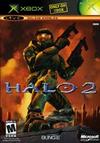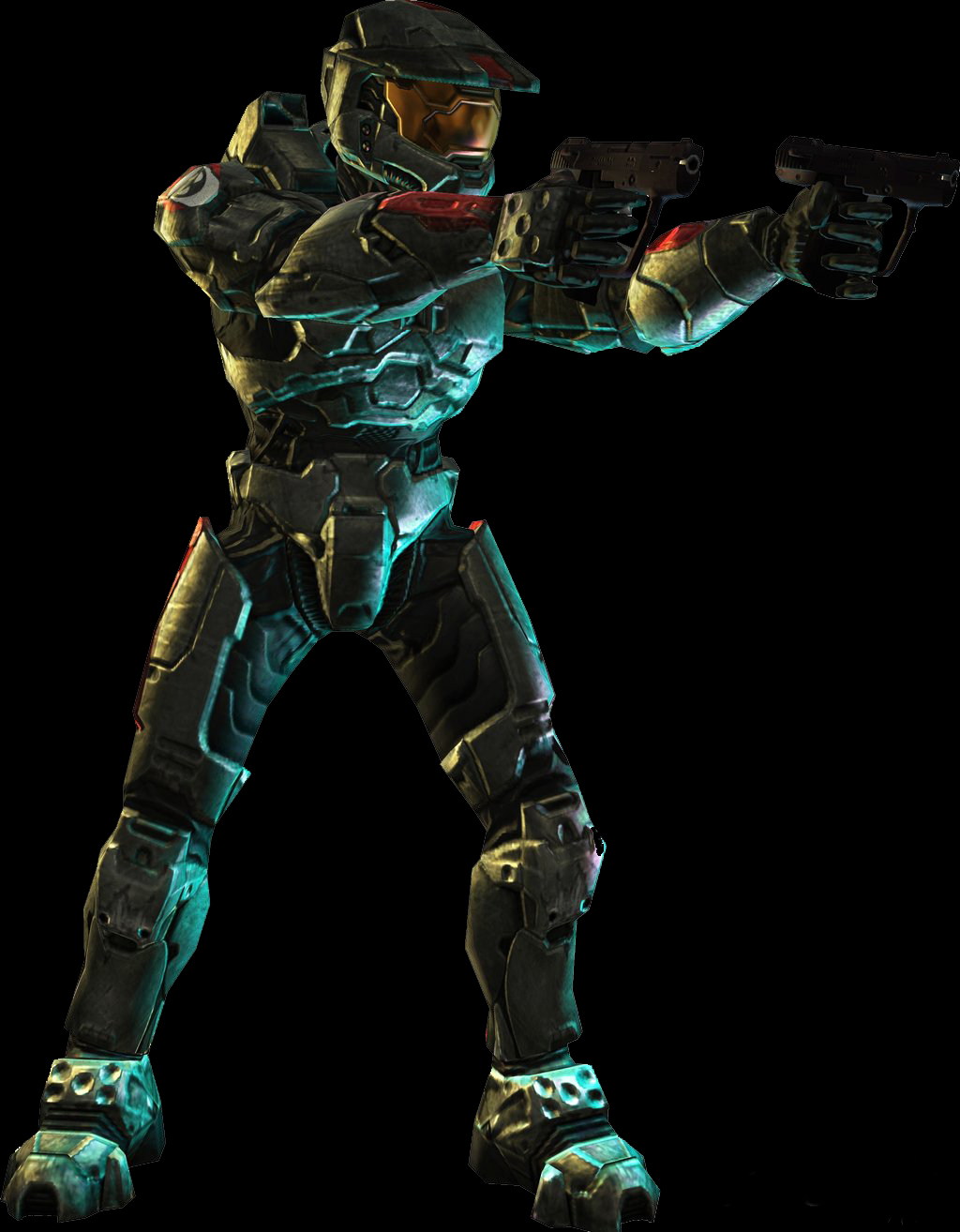


 Halo 2, the long-awaited sequel to one of
the most widely praised, most influential first-person
shooters ever created, has a very tough act to follow.
Fortunately, it's built on a foundation that's as strong as
they come. The game's success was preordained--publisher
Microsoft tallied more than 1.5 million Halo 2 preorders in
the weeks leading up to the game's release, which
demonstrates just how confident Halo's fans are in the
sequel's quality. But how is it, really? The good news is,
the sequel to the Xbox's defining action game is an
absolutely superb, fully featured game, boasting an excellent
presentation, a highly replayable campaign, and the greatest,
most complete online multiplayer component in a console
shooter yet. A surprisingly disappointing story and a fairly
short single-player portion are noticeable shortcomings, but
there's just so much breadth of content in Halo 2, and the
action itself is so outstanding, that there can be no denying
its quality. Overall, it's one of the very best action games
available.
Halo 2, the long-awaited sequel to one of
the most widely praised, most influential first-person
shooters ever created, has a very tough act to follow.
Fortunately, it's built on a foundation that's as strong as
they come. The game's success was preordained--publisher
Microsoft tallied more than 1.5 million Halo 2 preorders in
the weeks leading up to the game's release, which
demonstrates just how confident Halo's fans are in the
sequel's quality. But how is it, really? The good news is,
the sequel to the Xbox's defining action game is an
absolutely superb, fully featured game, boasting an excellent
presentation, a highly replayable campaign, and the greatest,
most complete online multiplayer component in a console
shooter yet. A surprisingly disappointing story and a fairly
short single-player portion are noticeable shortcomings, but
there's just so much breadth of content in Halo 2, and the
action itself is so outstanding, that there can be no denying
its quality. Overall, it's one of the very best action games
available.
 Everything that you maybe didn't love about
Halo is pretty much back, too. Let's face it: Halo was an
incredible game, but some aspects of it were relatively weak.
Most notably, many players felt that the game's occasionally
repetitive level designs undermined the action, such as when
the Master Chief squared off against the Flood in the
infamous Library level. Also, though the game's visuals were
terrific in the heat of battle, Halo's cinematic cutscenes
using the game's 3D engine left a lot to be desired--they
looked decidedly rough when compared with the rest of the
game. These shortcomings rear their heads again in Halo 2, at
least during the game's campaign. Some of the in-engine
cutscenes are kind of ugly, though they're much better than
those of the original. Meanwhile, the action itself is as
dynamic and intense as ever, to the point where it can be
tons of fun to replay the same sequence over and over, since
you'll find that the friendly and enemy forces you'll be
battling with will never act quite the same way twice.
However, Halo 2's campaign--though it features a number of
memorable, spectacular set pieces--frequently boils down to
straight-up run-and-gun corridor crawls, one after another.
Everything that you maybe didn't love about
Halo is pretty much back, too. Let's face it: Halo was an
incredible game, but some aspects of it were relatively weak.
Most notably, many players felt that the game's occasionally
repetitive level designs undermined the action, such as when
the Master Chief squared off against the Flood in the
infamous Library level. Also, though the game's visuals were
terrific in the heat of battle, Halo's cinematic cutscenes
using the game's 3D engine left a lot to be desired--they
looked decidedly rough when compared with the rest of the
game. These shortcomings rear their heads again in Halo 2, at
least during the game's campaign. Some of the in-engine
cutscenes are kind of ugly, though they're much better than
those of the original. Meanwhile, the action itself is as
dynamic and intense as ever, to the point where it can be
tons of fun to replay the same sequence over and over, since
you'll find that the friendly and enemy forces you'll be
battling with will never act quite the same way twice.
However, Halo 2's campaign--though it features a number of
memorable, spectacular set pieces--frequently boils down to
straight-up run-and-gun corridor crawls, one after another.
 It's now possible to dual-wield some
weapons--the smaller, one-handed ones. This isn't exactly an
original feature, but Halo 2 implements it very well, both in
single-player and multiplayer. When you're dual-wielding, you
can independently fire both weapons using the left and right
shoulder buttons. This leads to double the stopping power,
makes some previously underpowered weapons (such as the
needler) quite potent when used in tandem, and creates the
potential for some inventive weapon combinations. On the
other hand, while dual-wielding, you cannot throw your frag
grenades or plasma grenades (which any Halo player knows are
extremely useful), and you cannot execute melee attacks
without automatically dropping the off-hand weapon in the
process. So, dual-wielding doesn't dominate the game; it has
its place, and it's an interesting addition to the game's
tactics.
It's now possible to dual-wield some
weapons--the smaller, one-handed ones. This isn't exactly an
original feature, but Halo 2 implements it very well, both in
single-player and multiplayer. When you're dual-wielding, you
can independently fire both weapons using the left and right
shoulder buttons. This leads to double the stopping power,
makes some previously underpowered weapons (such as the
needler) quite potent when used in tandem, and creates the
potential for some inventive weapon combinations. On the
other hand, while dual-wielding, you cannot throw your frag
grenades or plasma grenades (which any Halo player knows are
extremely useful), and you cannot execute melee attacks
without automatically dropping the off-hand weapon in the
process. So, dual-wielding doesn't dominate the game; it has
its place, and it's an interesting addition to the game's
tactics.
 Also, all the vehicles in Halo 2 now
noticeably sustain damage when struck, but this effect is
mostly cosmetic. It looks really terrific, to be
sure--location-specific damage means you'll see the vehicles
get shot apart piece by piece, depending on how you hit them.
However, even if you're piloting a burning husk of a vehicle
that seems held together by duct tape, chewing gum, and hope,
it won't blow up unless your shield meter is depleted and
you're killed as per usual. This seems counterintuitive, but
then again, not having to worry about your vehicle's health
independently of your own certainly doesn't hurt the game.
And besides, if your opponent is sporting a shinier ride than
you are, you can try to take what isn't yours.
Also, all the vehicles in Halo 2 now
noticeably sustain damage when struck, but this effect is
mostly cosmetic. It looks really terrific, to be
sure--location-specific damage means you'll see the vehicles
get shot apart piece by piece, depending on how you hit them.
However, even if you're piloting a burning husk of a vehicle
that seems held together by duct tape, chewing gum, and hope,
it won't blow up unless your shield meter is depleted and
you're killed as per usual. This seems counterintuitive, but
then again, not having to worry about your vehicle's health
independently of your own certainly doesn't hurt the game.
And besides, if your opponent is sporting a shinier ride than
you are, you can try to take what isn't yours.
Halo 2's multiplayer options build on the strong foundation established by its predecessor, mostly by taking the action online and introducing a variety of great player-matching features that help make the online play much easier to get into here than in most shooters. In fact, these rather subtle features turn out to be Halo 2's greatest innovations. For starters, you can customize your appearance by choosing from a large variety of different color options and insignias (you can also look like the Master Chief or like a Covenant elite--a purely cosmetic choice). Once you get online, expect Halo 2 to play just as responsively as it does offline; during the course of several days of Xbox Live testing on a standard DSL connection, we experienced perfectly smooth, lag-free gameplay in almost every match.
To say that there's a lot to like about Halo 2 would be an understatement. Depending on what you most want from the game, you may find that Halo 2 leaves you desperate for another installment in the series--but even if it takes Bungie another several years to produce that game, there's enough first-rate action and lasting value here to keep you happily entertained till that time comes.
